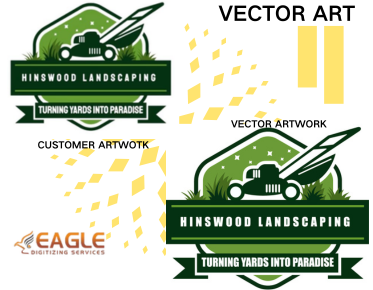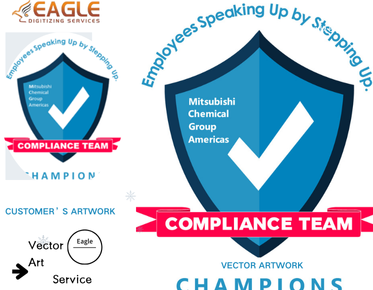How to Use Vector Graphics to Enhance Print Quality
In the ever-evolving world of printing, one technology has consistently stood out for its ability to deliver exceptional quality. This is the realm of vector graphics, a technology that not only improves the clarity and precision of printed designs but also optimizes the entire printing process. Understanding how to leverage vector graphics can profoundly impact the quality of printed materials. This article delves into the essence of vector graphics and their significant role in enhancing print quality.
Understanding Vector Graphics
At the core of vector graphics is the use of mathematical equations to describe images. Unlike raster graphics, which are composed of pixels and can lead to pixelation when scaled, vector graphics remain crisp and clear regardless of the size. This makes vector art conversion particularly suited for printing processes where image clarity is paramount.
The Advantages of Vector Graphics in Printing
The primary advantage of using vector graphics in printing is their scalability without loss of quality. Printers can easily manipulate vector images to create designs ranging from tiny business cards to massive billboards without compromising on clarity. Additionally, vector graphics require less memory and can be processed faster than their raster counterparts. This efficiency streamlines workflow and often results in cost savings for high-volume printing tasks.
Applications of Vector Graphics in Print Design
Vector graphics find applications across various printing domains. In marketing, they're indispensable for designing logos and brand assets that need to be reproduced in multiple sizes and formats. For instance, clothing companies use vector designs to print on fabrics, ensuring that their patterns remain vivid and detailed. Here is where vector services like those offered by Eagle Digitizing play a crucial role—transforming intricate designs into production-ready formats.
Converting Artwork for Enhanced Print Results
Converting existing artwork to vectors is a common practice for achieving high-quality prints. Services like raster to vector conversion services efficiently transform traditional designs into vector formats, ready for any type of printing technique—from screen printing to laser cutting. Through the conversion process, details are enhanced, color separations are optimized, and designs become versatile for multiple uses.
Integrating Vector Graphics in the Printing Process
For printing professionals, understanding the technical aspects of integrating vector formats is key. Print shops need to ensure their software is compatible with vector file types such as EPS, AI, and SVG. The preparation of vector files often involves color separations—a technique where each color in the design is isolated into separate layers, allowing for precise control over the printing process.
Precision and Detail Through Vector Graphics
One of the standout benefits of vector graphics is the ability to maintain sharp, intricate details. For example, when printing on small or intricate surfaces such as customized promotional items or decals, the accuracy of vector graphics ensures that even the smallest text and detailed graphics remain readable and crisp.
The Role of Service Providers in Vector Conversion
Professional service providers like Eagle Digitizing offer a wide range of vector conversion solutions that support businesses in achieving superior printing results. Their expertise encompasses everything from basic vectorization to complex multi-layer designs tailored for various printing demands.
In Conclusion: The Future of Printing and Vector Graphics
As printing technology continues to advance, the role of vector graphics is set to grow. Innovations in digital printing and on-demand customization require adaptable and precise graphic solutions, making vectors indispensable. Exploring how these graphics can further integrate with AI and machine learning to automate design adjustments or enhance printing efficiency presents a fascinating avenue for future research and application.


.png)
